-
 Bitcoin
Bitcoin $84,800.7048
2.32% -
 Ethereum
Ethereum $1,882.5584
2.87% -
 Tether USDt
Tether USDt $1.0000
0.01% -
 XRP
XRP $2.0968
-0.03% -
 BNB
BNB $603.2602
-0.62% -
 Solana
Solana $124.5532
-0.44% -
 USDC
USDC $0.9999
-0.02% -
 Dogecoin
Dogecoin $0.1707
1.90% -
 Cardano
Cardano $0.6689
0.47% -
 TRON
TRON $0.2384
0.86% -
 Toncoin
Toncoin $4.0121
-3.28% -
 Chainlink
Chainlink $13.7734
0.97% -
 UNUS SED LEO
UNUS SED LEO $9.4100
2.89% -
 Stellar
Stellar $0.2672
0.86% -
 Avalanche
Avalanche $19.2693
1.92% -
 Sui
Sui $2.3662
2.82% -
 Shiba Inu
Shiba Inu $0.0...01237
-2.05% -
 Hedera
Hedera $0.1657
1.14% -
 Polkadot
Polkadot $4.0848
0.85% -
 Litecoin
Litecoin $82.9308
-0.63% -
 MANTRA
MANTRA $6.2006
-1.38% -
 Bitcoin Cash
Bitcoin Cash $304.9806
0.27% -
 Bitget Token
Bitget Token $4.5883
-0.15% -
 Dai
Dai $1.0001
0.02% -
 Ethena USDe
Ethena USDe $0.9998
-0.01% -
 Pi
Pi $0.6918
-2.64% -
 Hyperliquid
Hyperliquid $13.0896
-1.19% -
 Monero
Monero $218.5433
0.66% -
 Uniswap
Uniswap $6.1491
2.50% -
 Aptos
Aptos $5.2452
-0.95%
How do I view my transaction history in Atomic Wallet?
To access your Atomic Wallet transaction history, open the app, navigate to the "Transactions" section, and use filters to find specific entries by date or cryptocurrency.
Mar 29, 2025 at 12:22 pm
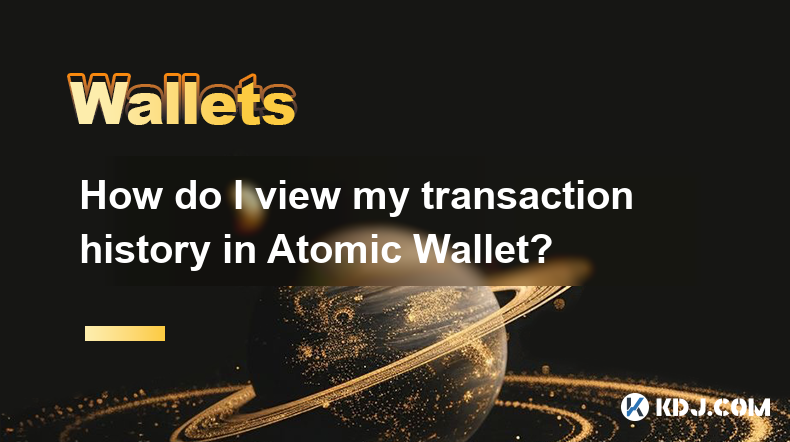
Accessing Your Atomic Wallet Transaction History
Atomic Wallet provides a straightforward method to access your transaction history. This history details all your cryptocurrency deposits, withdrawals, and internal wallet transfers. Understanding how to access this information is crucial for tracking your assets and managing your portfolio effectively. The process is designed to be user-friendly, even for those new to cryptocurrency.
First, you need to open your Atomic Wallet application. Ensure you have the latest version installed for optimal performance and security. If you haven't already, create a strong password and enable two-factor authentication for added security. This will protect your assets from unauthorized access.
Once the wallet is open, you'll see a main dashboard displaying your current balances across different cryptocurrencies. The location of your transaction history might vary slightly depending on your wallet version, but it's generally easily accessible.
To view your transaction history, look for a section labeled "Transactions" or a similar designation. This section is usually prominently displayed on the main screen or accessible through a menu. Clicking on this will open your complete transaction history.
The transaction history displays details such as the date and time of each transaction, the cryptocurrency involved, the amount sent or received, the transaction ID (TXID), and the recipient or sender address. The TXID is a crucial piece of information for verifying the transaction on the relevant blockchain explorer.
The interface allows you to filter your transaction history. You can filter by specific cryptocurrencies, date ranges, or even search for specific transaction IDs. This filtering functionality is extremely useful for managing a large number of transactions. This makes tracking down specific transactions much easier.
Each transaction entry usually provides a link to a blockchain explorer. This allows you to independently verify the transaction details on the blockchain itself. This verification provides an additional layer of security and transparency. Blockchain explorers are publicly accessible databases that record all transactions on a specific blockchain.
Remember to always keep your Atomic Wallet software updated. Updates often include improvements to the user interface and enhanced security features. Regular updates ensure you have access to the latest features and security patches.
Understanding Transaction Details
Each transaction entry in your Atomic Wallet history provides critical information. The Transaction ID (TXID) is a unique identifier for that specific transaction. This ID can be used to look up the transaction on a blockchain explorer.
The Date and Time of the transaction is essential for tracking your activity over time. This allows you to easily identify transactions made on specific days or within specific periods. Accurate time stamps are vital for record-keeping.
The Cryptocurrency involved is clearly displayed. This helps you keep track of your holdings in different cryptocurrencies. Understanding which cryptocurrency was involved in each transaction is crucial for portfolio management.
The Amount shows the quantity of cryptocurrency sent or received. This is crucial for reconciling your balances and tracking gains or losses. Accurately tracking amounts is essential for financial reporting.
The Sender and Recipient Addresses are typically displayed (though the recipient address may be partially obscured for privacy reasons in some cases). These addresses help to identify the parties involved in the transaction. Understanding the addresses involved is key to security and accountability.
The status of the transaction, such as "Confirmed," "Pending," or "Failed," is usually indicated. This allows you to monitor the progress of your transactions. Knowing the status is vital for understanding the completion of your transactions.
Troubleshooting Transaction History Issues
If you're experiencing problems viewing your transaction history, there are several troubleshooting steps you can take. First, ensure you're using the latest version of Atomic Wallet. Outdated software can sometimes cause glitches or display errors.
Check your internet connection. A poor or unstable internet connection can prevent the wallet from properly loading your transaction history. A stable connection is necessary for accessing your transaction data.
Try restarting your device. A simple restart can often resolve minor software glitches. Restarting your device can clear temporary files and improve performance.
If the problem persists, contact Atomic Wallet support. Their support team can assist with more complex issues or provide guidance on resolving specific problems. Their support team is available to answer your questions.
If you suspect unauthorized access, change your password immediately and enable two-factor authentication. This will secure your wallet and protect your assets. Security is paramount when dealing with cryptocurrency.
Remember to always back up your seed phrase. This is crucial for recovering access to your wallet in case of device loss or other unforeseen circumstances. Your seed phrase is your key to accessing your funds.
Frequently Asked Questions
Q: What if I can't find a specific transaction?
A: Use the filtering options within the transaction history to narrow down your search by date, cryptocurrency, or transaction ID. If you still can't find it, check the blockchain explorer using the relevant TXID if you have it.
Q: Why is my transaction still showing as "Pending"?
A: Pending transactions haven't yet been confirmed by the network. The confirmation time depends on the specific cryptocurrency and network congestion. Check the blockchain explorer for the transaction status.
Q: What should I do if I see a suspicious transaction?
A: Immediately contact Atomic Wallet support and change your password. Suspicious activity may indicate a security breach. Act swiftly to protect your assets.
Q: Can I download my transaction history?
A: Atomic Wallet may offer options to export or download your transaction history. Check the settings or support documentation for details on this functionality. This allows for offline record-keeping.
Q: How often is my transaction history updated?
A: Your transaction history is generally updated in real-time or near real-time, depending on the network confirmation times for the specific cryptocurrency. It reflects the most current state of your transactions.
Disclaimer:info@kdj.com
The information provided is not trading advice. kdj.com does not assume any responsibility for any investments made based on the information provided in this article. Cryptocurrencies are highly volatile and it is highly recommended that you invest with caution after thorough research!
If you believe that the content used on this website infringes your copyright, please contact us immediately (info@kdj.com) and we will delete it promptly.
- Mastercard Launches Multi-Token Network (MTN) to Connect Traditional Finance and Digital Assets
- 2025-04-02 10:35:12
- LCX is set to participate in the Paris Blockchain Week, which commences on April 8th in Paris.
- 2025-04-02 10:35:12
- FIO Protocol's head of marketing, Marie Grig, will participate in Paris Blockchain Week
- 2025-04-02 10:30:12
- DTX Exchange (DTX) Token Price Prediction: Will the DTX Presale Ever End?
- 2025-04-02 10:30:12
- Binance's Routine Contract Rule Adjustment Accidentally Exposed the Most Vulnerable Pimple in the Crypto Market
- 2025-04-02 10:25:12
- 3 To 6 Months Old Bitcoin Buyers Have Been Holding Strong Recently, Showing Conviction Not Capitulation
- 2025-04-02 10:25:12
Related knowledge

Where can I check the value of tokens in the Trust Wallet?
Apr 02,2025 at 11:14am
When using Trust Wallet, one of the most user-friendly and versatile cryptocurrency wallets available, checking the value of your tokens is a straightforward process. Trust Wallet supports a wide range of cryptocurrencies and tokens, making it a popular choice for both beginners and experienced users in the crypto space. To check the value of your token...
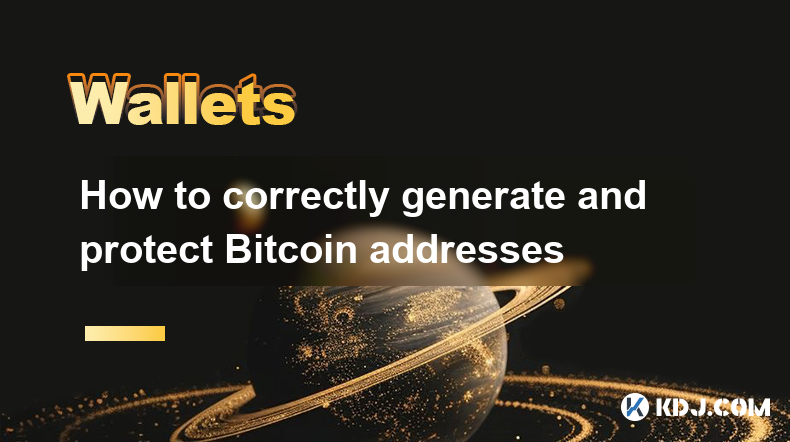
How to correctly generate and protect Bitcoin addresses
Apr 02,2025 at 06:49am
Understanding Bitcoin AddressesA Bitcoin address is like your bank account number. It's a unique identifier that allows others to send you Bitcoin. Unlike a bank account, however, Bitcoin addresses are generated cryptographically and are linked to your private keys. Losing your private keys means losing access to your Bitcoin. Therefore, generating and...
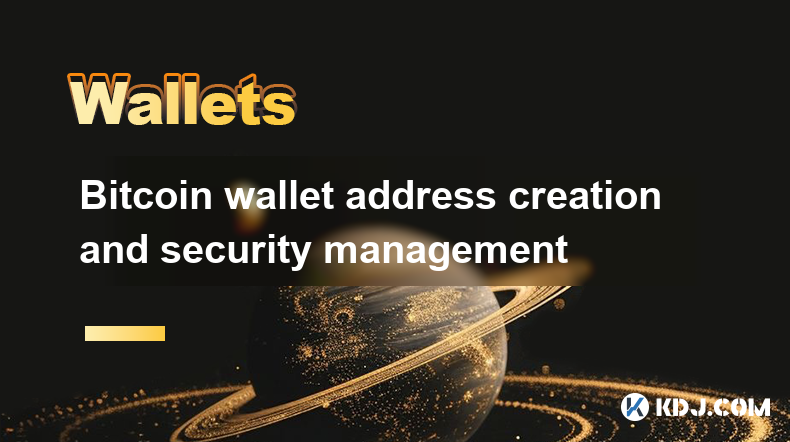
Bitcoin wallet address creation and security management
Mar 31,2025 at 10:56pm
Understanding Bitcoin Wallet AddressesA Bitcoin wallet doesn't store Bitcoin directly. Instead, it stores private keys which are long strings of characters. These keys grant access to your Bitcoin. Your public key, derived from the private key, is used to generate your Bitcoin wallet address, a unique identifier similar to a bank account number. This a...
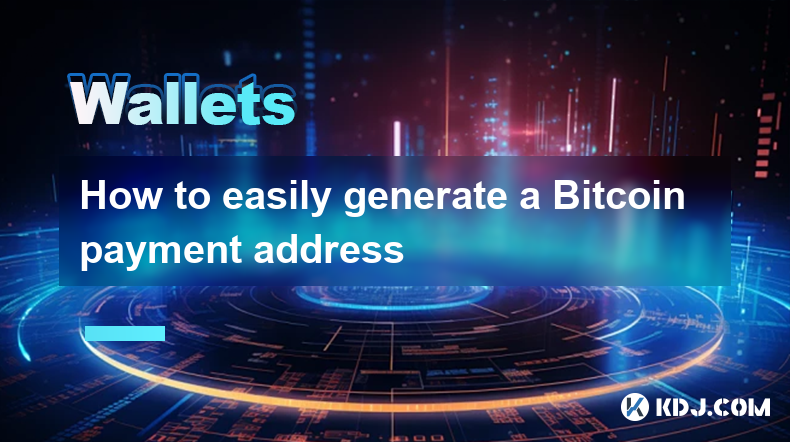
How to easily generate a Bitcoin payment address
Mar 29,2025 at 10:49am
Generating a Bitcoin payment address might seem daunting, but it's actually quite straightforward. This process is crucial for receiving Bitcoin, as each transaction requires a unique address. Understanding how this works is fundamental to using Bitcoin effectively. This guide will walk you through the simple steps, regardless of your technical experti...
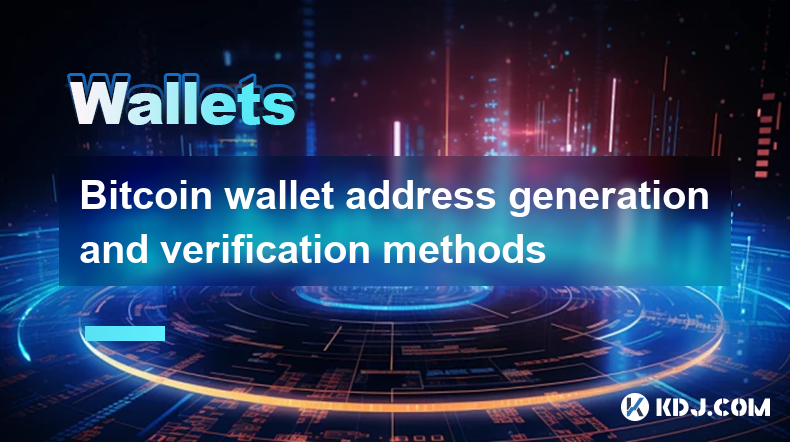
Bitcoin wallet address generation and verification methods
Apr 01,2025 at 11:01am
Understanding Bitcoin Wallet AddressesA Bitcoin wallet address is a unique identifier, similar to a bank account number, used to receive and send Bitcoin. It's a string of alphanumeric characters, crucial for participating in the Bitcoin network. Understanding how these addresses are generated and verified is paramount for secure Bitcoin transactions. ...
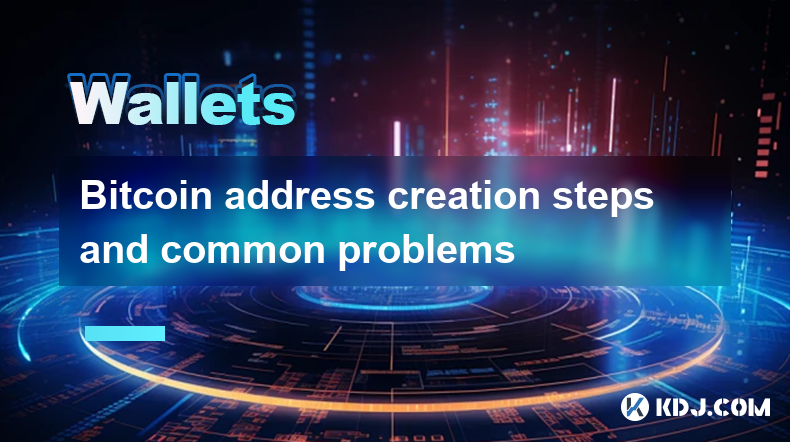
Bitcoin address creation steps and common problems
Mar 30,2025 at 06:07am
Understanding Bitcoin AddressesA Bitcoin address is a unique identifier, similar to a bank account number, used to receive Bitcoin. It's a string of alphanumeric characters generated from a public key, derived from your private key. Understanding the distinction between public and private keys is crucial for Bitcoin security. Your private key should be...

Where can I check the value of tokens in the Trust Wallet?
Apr 02,2025 at 11:14am
When using Trust Wallet, one of the most user-friendly and versatile cryptocurrency wallets available, checking the value of your tokens is a straightforward process. Trust Wallet supports a wide range of cryptocurrencies and tokens, making it a popular choice for both beginners and experienced users in the crypto space. To check the value of your token...

How to correctly generate and protect Bitcoin addresses
Apr 02,2025 at 06:49am
Understanding Bitcoin AddressesA Bitcoin address is like your bank account number. It's a unique identifier that allows others to send you Bitcoin. Unlike a bank account, however, Bitcoin addresses are generated cryptographically and are linked to your private keys. Losing your private keys means losing access to your Bitcoin. Therefore, generating and...

Bitcoin wallet address creation and security management
Mar 31,2025 at 10:56pm
Understanding Bitcoin Wallet AddressesA Bitcoin wallet doesn't store Bitcoin directly. Instead, it stores private keys which are long strings of characters. These keys grant access to your Bitcoin. Your public key, derived from the private key, is used to generate your Bitcoin wallet address, a unique identifier similar to a bank account number. This a...

How to easily generate a Bitcoin payment address
Mar 29,2025 at 10:49am
Generating a Bitcoin payment address might seem daunting, but it's actually quite straightforward. This process is crucial for receiving Bitcoin, as each transaction requires a unique address. Understanding how this works is fundamental to using Bitcoin effectively. This guide will walk you through the simple steps, regardless of your technical experti...

Bitcoin wallet address generation and verification methods
Apr 01,2025 at 11:01am
Understanding Bitcoin Wallet AddressesA Bitcoin wallet address is a unique identifier, similar to a bank account number, used to receive and send Bitcoin. It's a string of alphanumeric characters, crucial for participating in the Bitcoin network. Understanding how these addresses are generated and verified is paramount for secure Bitcoin transactions. ...

Bitcoin address creation steps and common problems
Mar 30,2025 at 06:07am
Understanding Bitcoin AddressesA Bitcoin address is a unique identifier, similar to a bank account number, used to receive Bitcoin. It's a string of alphanumeric characters generated from a public key, derived from your private key. Understanding the distinction between public and private keys is crucial for Bitcoin security. Your private key should be...
See all articles























































































